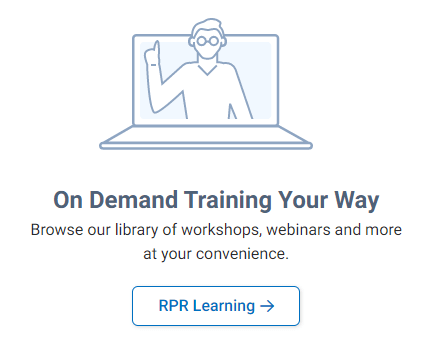Essential Business Acronyms and Concepts: RVP, Agnostic, COI, LOA, LOE, CPO, AOP, and the Language of Business
Overview: Why These Terms Matter
Understanding core business acronyms and concepts speeds decisions, aligns teams, and reduces execution risk. This guide explains RVP, COI, LOA, LOE, CPO, AOP, the meaning of agnostic in business contexts, and why accounting is widely called the language of business. Where appropriate, you’ll find implementation steps, real-world examples, challenges to expect, and alternative approaches, with verified references for key definitions and context [1] .
What Is RVP in Business?
RVP commonly stands for Regional Vice President, a senior leader overseeing performance across a geography or portfolio. An RVP typically manages sales or operations targets, guides local leaders, and translates corporate strategy to market execution. Responsibilities often include forecasting, pipeline governance, territory planning, and cross-functional coordination with marketing, finance, and customer success. Titles vary by company, but the core idea is a senior leader accountable for regional outcomes.
Implementation steps
:
- Define the RVP remit: revenue targets, margin, customer retention, or operational KPIs.
- Establish a monthly operating rhythm: pipeline reviews, QBRs, and forecast checkpoints.
- Create territory designs and capacity plans aligned with annual objectives.
- Standardize dashboards for visibility into bookings, win rates, and churn.
Example
: A SaaS firm appoints an RVP for the Midwest to consolidate fragmented sales coverage. Within two quarters, standardized pipeline hygiene and localized enablement raise win rates by 6 percentage points.
Challenges and solutions
:
- Challenge: Misaligned targets across teams. Solution: Joint KPI workshops and shared scorecards.
- Challenge: Forecast volatility. Solution: Stage-based probability discipline and weekly commit calls.
What Does “Agnostic” Mean in Business?
In business and IT, agnostic refers to being independent of any single vendor, product, or platform, prioritizing interoperability and flexibility across environments [1] . A technology- or vendor-agnostic approach allows organizations to choose the best-fit tool for a specific need and avoid lock-in. This is commonly applied in software architecture, payments, data platforms, and procurement strategy [1] . Practitioner articles also emphasize the operational advantages of separating process design from specific tools to uncover inefficiencies and foster innovation [2] . In payments, vendor-agnostic routing can improve resilience and customer reach by enabling multiple providers [3] .
Implementation steps
:
- Define standards-based interfaces (e.g., REST/GraphQL, event schemas) to reduce coupling.
- Use abstraction layers for payments, messaging, and storage to enable provider choice.
- Adopt process-first design workshops before tool selection [2] .
Example
: A retailer builds a payments abstraction and activates two gateways to improve authorization rates and regional coverage, reducing single-vendor outage risk
[3]
.
Challenges and solutions
:
- Challenge: Added integration complexity. Solution: Start with high-impact domains (payments, authentication).
- Challenge: Governance drift. Solution: Architecture standards and a design review board.
What Does COI Mean in Business?
COI often means Certificate of Insurance in procurement and vendor management. A COI summarizes an insurance policy’s core details (coverage types, limits, effective dates) and is used by businesses to verify a counterparty’s insurance before work begins. While templates vary, the practice is widespread in contracting, events, and facilities. Many organizations require COIs to mitigate liability and ensure vendors meet minimum coverage requirements.
Implementation steps
:
- Set minimum coverage requirements by vendor risk tier (e.g., general liability, workers’ comp).
- Request COIs during onboarding and annually at renewal.
- Use a centralized repository and automated reminders to track expirations.
- Escalate exceptions through legal and risk management workflows.
Example
: A property manager requires COIs from contractors before issuing access badges, reducing exposure during on-site work.
Challenges and solutions
:
- Challenge: Lapsed policies. Solution: Automated COI expiry alerts and vendor holds.
- Challenge: Inconsistent formats. Solution: Standard intake forms and minimum standards.
What Is an LOA in Business?
LOA can mean Letter of Authorization or Level of Authority, depending on context. A Letter of Authorization grants permission for another party to act on a company’s behalf-commonly used in telecom porting, energy switching, logistics, or data access. Level of Authority defines delegated decision rights (e.g., who can approve spend or sign contracts at which thresholds). Both instruments clarify who can do what-and with what limits.
Implementation steps
:
- For Letters of Authorization: use standardized templates, explicit scope, duration, and revocation terms; store signed copies in your contract system.
- For Levels of Authority: publish an approval matrix (by spend, term, and risk) and configure it in your purchasing and CLM tools.
Example
: A distributor issues an LOA to a customs broker to clear goods at ports, reducing clearance delays while maintaining audit trails.
Challenges and solutions
:
- Challenge: Ambiguous scopes. Solution: Define specific actions, time limits, and jurisdictions.
- Challenge: Shadow approvals. Solution: Enforce system-based workflows and periodic audits.
What Does LOE Stand For in Business?
LOE frequently stands for Level of Effort, an estimate of the time and resources required to complete a task or project. LOE is used in project planning, staffing, and budgeting to size initiatives and set expectations. Teams commonly express LOE in hours, story points, or T-shirt sizes. The value of LOE is in aligning stakeholders on scope and trade-offs, not predicting exact durations.
Implementation steps
:
- Define estimation scales and calibration examples.
- Hold cross-functional scoping sessions to surface dependencies.
- Capture assumptions and risks alongside LOE.
- Compare LOE to capacity and adjust scope or timelines.
Example
: A marketing team estimates a campaign redesign at 320 hours LOE and staggers deliverables over two sprints to meet a product launch.
Challenges and solutions
:
- Challenge: Optimism bias. Solution: Use historical velocity and add contingency bands.
- Challenge: Hidden dependencies. Solution: Dependency mapping and early technical spikes.
What Is a CPO in Business?
CPO commonly means Chief Product Officer or Chief Procurement Officer, depending on the enterprise. The Chief Product Officer owns product strategy, roadmap, and lifecycle outcomes (adoption, retention, revenue). The Chief Procurement Officer leads sourcing strategy, supplier management, and cost/risk optimization. Both roles are executive-level, data-driven, and cross-functional-one centered on market-facing products, the other on enterprise spend and supply risk.
Implementation steps
:
- Clarify which CPO you mean in org communications and job descriptions.
- For Product: align roadmap to company strategy, define north-star metrics, and establish discovery-delivery loops.
- For Procurement: segment spend, define category strategies, and build supplier risk frameworks.
Example
: A scale-up hires a Chief Product Officer to unify UX, engineering, and GTM, cutting time-to-value by streamlining feedback loops.
Challenges and solutions
:
- Challenge: Siloed decision-making. Solution: Quarterly portfolio reviews and joint OKRs.
- Challenge: Supplier concentration risk. Solution: Dual sourcing and vendor-agnostic standards where feasible [1] .
What Is AOP in Business?
AOP typically refers to the Annual Operating Plan: the one-year financial and operational plan translating strategy into revenue, expense, headcount, and investment targets. The AOP anchors budgets, hiring plans, and performance incentives. Mature teams cascade AOP targets into quarterly OKRs and create variance management routines.
Implementation steps
:
- Start with a strategy-aligned top-down model (revenue, gross margin, OPEX envelopes).
- Run bottom-up inputs from sales capacity, marketing funnel math, and delivery productivity.
- Reconcile gaps, set guardrails, and lock the plan with governance calendars.
- Operationalize via monthly reviews, forecast updates, and course-corrected initiatives.
Example
: A services firm ties headcount ramps to backlog coverage ratios in the AOP, reducing bench costs while protecting service levels.
Challenges and solutions
:
- Challenge: Over-ambitious revenue. Solution: Triangulate with historical conversion and market data.
- Challenge: Rigid budgets. Solution: Create change-control for targeted growth bets.
What Is the “Language of Business”?
The phrase commonly refers to accounting because financial statements provide a standardized way to communicate performance, position, and cash flows to stakeholders. The idea is widely taught across business education and professional practice: accounting frameworks enable comparability and decision-useful information for owners, creditors, and managers. In IT contexts, some also use “language of business” to mean the shared metrics and processes that bridge functions, but the prevailing usage points to accounting’s role in reporting and analysis.
Implementation steps
:
- Adopt standardized reporting calendars and close processes.
- Ensure your teams understand basics of income statements, balance sheets, and cash flow.
- Define metric dictionaries for consistent use of ARR, gross margin, CAC, LTV, and working capital.
Example
: A startup runs monthly close training for managers so operational decisions consistently reflect unit economics.
Challenges and solutions
:
- Challenge: Nonstandard definitions. Solution: A single source of truth and approved metric catalog.
- Challenge: Slow closes. Solution: Pre-close checklists and automation for reconciliations.
“What Is a …” Handling Ambiguity
The trailing prompt “what is a …” signals ongoing learning needs. When you encounter ambiguous acronyms, use this quick method:
- Clarify the function and domain (finance, product, ops) to narrow meanings.
- Ask for the use case or document where it appears.
- Search trusted sources (company handbook, policy library, or recognized industry glossaries) rather than relying on assumptions.
Putting It All Together: Step-by-Step Playbook
- Build a shared glossary: Publish definitions for RVP, COI, LOA, LOE, CPO, and AOP on your intranet. Include owners and examples. Review quarterly.
- Adopt an agnostic design stance where it matters most: payments, data, and integrations. Use standards, abstraction layers, and process-first workshops [1] [2] [3] .
- Operationalize risk controls: Require COIs from vendors by tier; manage LOAs and Levels of Authority in your CLM and ERP with automated approvals.
- Institutionalize planning: Create an AOP process with top-down and bottom-up reconciliation, linked to OKRs and monthly variance reviews.
- Improve estimation: Standardize LOE practices, calibrate with history, and record assumptions and risks next to estimates.
- Teach the language of business: Provide accounting basics training and standardized metric definitions to all managers.
Alternatives and Nuances
– COI can also mean “conflict of interest” in compliance contexts; clarify by context and policy.
– CPO ambiguity (Product vs. Procurement) is common; reduce confusion with explicit role charters.
– LOA may be Authorization or Authority; state it explicitly in documents and workflows.

Source: therepublikofmancunia.com
– Agnostic strategies can introduce complexity; target them to high-value domains and balance with governance [1] [2] .
References
[1] TechTarget (2022). What is Agnostic in an IT Context?
[2] Advisicon. The Importance of Developing Technology-Agnostic Business Processes.

Source: wallpapercave.com
MORE FROM resultsfordeals.com












